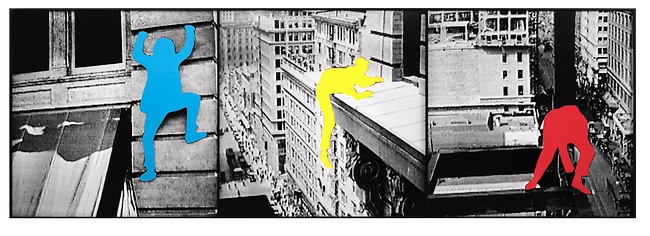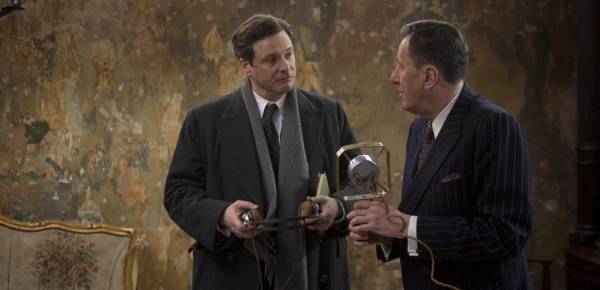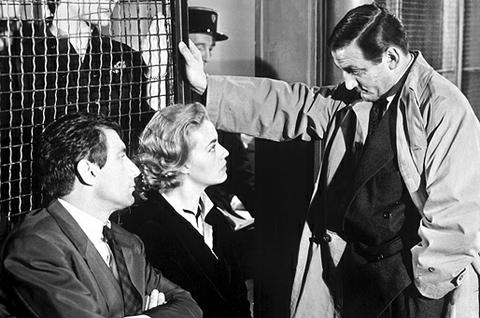
Lino Ventura’s long career will be celebrated at FIAF in January with screenings of ELEVATOR TO THE GALLOWS and other New Wave gangster classics
ASCENSEUR POUR L’ECHAFAUD (ELEVATOR TO THE GALLOWS) (Louis Malle, 1957)
French Institute Alliance Française
Florence Gould Hall
55 East 59th St. between Madison & Park Aves.
Tuesday, January 11, $13, 12:30 & 7:30
Series continues January 18 & 25
212-355-6160
www.fiaf.org
 Born in Parma in 1919, Angiolino Giuseppe Pascal Ventura began his unexpected film career after suffering an injury as a Greco-Roman wrestler, becoming a close friend of Jean Gabin’s and quickly establishing himself as one of the great character actors in French gangster pictures, appearing in more than seventy-five movies before his death in 1987. Over his career, he worked with such stars as Gabin, Jeanne Moreau, Annie Girardot, Alain Delon, Jean-Paul Belmondo, and Danielle Darrieux and for such directors as Jacques Becker, Julien Duvivier, William Dieterle, Vittorio de Sica, Claude Lelouch, and Terence Young. FIAF will be paying tribute to the cool-as-a-cucumber actor with a two-brief three-week, six-film festival that begins January 11 with ELEVATOR TO THE GALLOWS (Louis Malle, 1957) and ARMY OF SHADOWS (Jean-Pierre Melville, 1969) and continues January 18 with THE BIG RISK (Claude Sautet, 1960) and SECOND BREATH (Jean-Pierre Melville, 1966) and January 25 with MONSIEUR GANGSTER (Georges Lautner, 1963) and THE GRILLING (Claude Miller, 1981).
Born in Parma in 1919, Angiolino Giuseppe Pascal Ventura began his unexpected film career after suffering an injury as a Greco-Roman wrestler, becoming a close friend of Jean Gabin’s and quickly establishing himself as one of the great character actors in French gangster pictures, appearing in more than seventy-five movies before his death in 1987. Over his career, he worked with such stars as Gabin, Jeanne Moreau, Annie Girardot, Alain Delon, Jean-Paul Belmondo, and Danielle Darrieux and for such directors as Jacques Becker, Julien Duvivier, William Dieterle, Vittorio de Sica, Claude Lelouch, and Terence Young. FIAF will be paying tribute to the cool-as-a-cucumber actor with a two-brief three-week, six-film festival that begins January 11 with ELEVATOR TO THE GALLOWS (Louis Malle, 1957) and ARMY OF SHADOWS (Jean-Pierre Melville, 1969) and continues January 18 with THE BIG RISK (Claude Sautet, 1960) and SECOND BREATH (Jean-Pierre Melville, 1966) and January 25 with MONSIEUR GANGSTER (Georges Lautner, 1963) and THE GRILLING (Claude Miller, 1981).
Louis Malle’s first feature-length fiction film, following THE SILENT WORLD (made with Jacques Cousteau), ELEVATOR TO THE GALLOWS is a classic French noir that comes with all the trimmings — and can now be seen in an excellent 35mm print with new subtitles. Jeanne Moreau stars as Florence Carala, who is married to ruthless business tycoon Simon (Jean Wall) but is carrying on an affair with Simon’s right-hand man, Julien Tavernier (Maurice Ronet). Julien plans the perfect murder — or so he thinks, until he has to go back to retrieve a crucial piece of evidence and gets trapped on the elevator. While he struggles to find a way out and Florence waits for him anxiously at a neighborhood bistro, young couple Louis (Georges Poujouly) and Veronique (Yori Bertin) take off in Julien’s convertible and get into some serious trouble of their own, with tough police inspector (Lino Ventura) on the case. Mistaken identity, cold-blooded killings, jealousy, and one of the greatest film scores ever — by Miles Davis, recorded in one overnight session — make ELEVATOR TO THE GALLOWS a splendid debut from one of the world’s finest filmmakers.
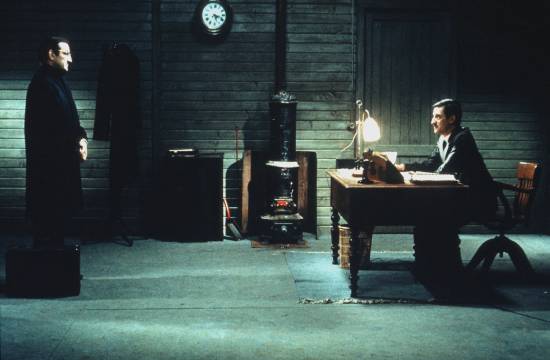
Jean-Pierre Melville’s ARMY OF SHADOWS is part of Lino Ventura celebration at FIAF (courtesy Rialto Pictures)
L’ARMÉE DES OMBRES (ARMY OF SHADOWS) (Jean-Pierre Melville, 1969)
French Institute Alliance Française
Florence Gould Hall
55 East 59th St. between Madison & Park Aves.
Tuesday, January 11, $13, 4:00
Series continues January 18 & 25
212-355-6160
www.fiaf.org
 Based on the novel by Joseph Kessel (BELLE DE JOUR), Jean-Pierre Melville’s 1969 WWII drama ARMY OF SHADOWS got its first theatrical release in America a few years ago, in a restored 35mm print supervised by the film’s cinematographer, Pierre Lhomme, who shot it in a beautiful blue-gray palette. The film centers on a small group of French resistance fighters, including shadowy leader Luc Jardie (Paul Meurisse), the smart and determined Mathilde (Simone Signoret), the nervous Jean-François (Jean-Pierre Cassel), the steady and dependable Felix (Paul Crauchet), the stocky Le Bison (Christian Barbier), the well-named Le Masque (Claude Mann), and the unflappable and practical Gerbier (Lino Ventura). Although Melville, who was a resistance fighter as well, wants the film to be his personal masterpiece, he is too close to the material, leaving large gaps in the narrative and giving too much time to scenes that don’t deserve them. He took offense at the idea that he portrayed the group of fighters as gangsters, yet what shows up on the screen is often more film noir than war movie. However, there are some glorious sections of ARMY OF SHADOWS, including Gerbier’s escape from a Vichy camp, the execution of a traitor to the cause, and a tense MISSION: IMPOSSIBLE–like (the TV series, not the Tom Cruise vehicles) attempt to free the imprisoned Felix. But most of all there is Ventura, who gives an amazingly subtle performance that makes the overly long film (nearly two and a half hours) worth seeing all by itself.
Based on the novel by Joseph Kessel (BELLE DE JOUR), Jean-Pierre Melville’s 1969 WWII drama ARMY OF SHADOWS got its first theatrical release in America a few years ago, in a restored 35mm print supervised by the film’s cinematographer, Pierre Lhomme, who shot it in a beautiful blue-gray palette. The film centers on a small group of French resistance fighters, including shadowy leader Luc Jardie (Paul Meurisse), the smart and determined Mathilde (Simone Signoret), the nervous Jean-François (Jean-Pierre Cassel), the steady and dependable Felix (Paul Crauchet), the stocky Le Bison (Christian Barbier), the well-named Le Masque (Claude Mann), and the unflappable and practical Gerbier (Lino Ventura). Although Melville, who was a resistance fighter as well, wants the film to be his personal masterpiece, he is too close to the material, leaving large gaps in the narrative and giving too much time to scenes that don’t deserve them. He took offense at the idea that he portrayed the group of fighters as gangsters, yet what shows up on the screen is often more film noir than war movie. However, there are some glorious sections of ARMY OF SHADOWS, including Gerbier’s escape from a Vichy camp, the execution of a traitor to the cause, and a tense MISSION: IMPOSSIBLE–like (the TV series, not the Tom Cruise vehicles) attempt to free the imprisoned Felix. But most of all there is Ventura, who gives an amazingly subtle performance that makes the overly long film (nearly two and a half hours) worth seeing all by itself.


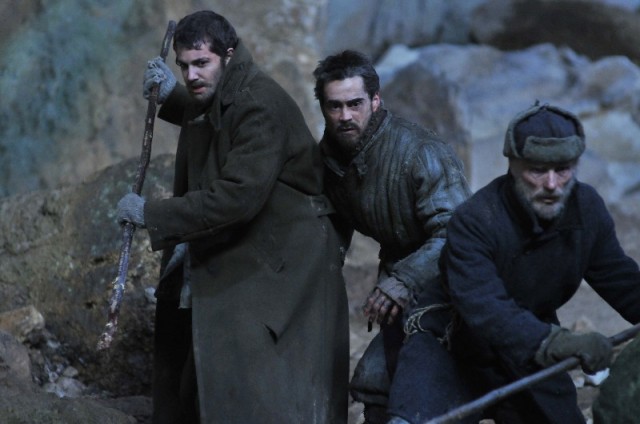


 Fritz Lang’s 1922 expressionist epic, DR. MABUSE, THE GAMBLER, is one of the most thrilling crime dramas ever made. Written by Lang and his wife, Thea von Harbou, based on the popular novel by Norbert Jacques, the film focuses on the title character (Rudolf Klein-Rogge), a criminal mastermind who is a sort of Nietzschean superman able to control his victims using hypnosis and psychoanalysis. Putting his evil gaze on such easy prey as the wealthy Edgar Hull (Paul Richter) and Count Told (Alfred Abel), Mabuse tries to ruin them through a series of card games he manipulates, with the help of nightclub singer Cara Carozza (Aud Egede-Nissen) and a motley crew of assistants that includes Spoerri (Robert Forster-Larrinaga), Georg (Hans Adalbert Schlettow), Hawasch (Charles Puffy), and Pesch (Georg John). Meanwhile, steadfast prosecutor Norbert von Wenk (Bernhard Goetzke) is on the case, attempting to track down and capture the mystery man who is leaving a trail of death and destruction behind him. Divided into two sections, “The Great Gambler, a Picture of Our Time” and “Inferno — A Play of People in Our Time,” DR. MABUSE is indeed a story of its time, a document of the state of mind of the German populace between the two world wars. Mabuse, representing both chaos and tyranny, is a master of disguise, portraying numerous middle-class figures fighting against the upper class and authority. The film is not only about one evil man’s grab for power but the power of cinema itself; just as Mabuse can change characters within the film, all of the characters are merely actors in costume, performing a fiction on stunning sets created by production designer Karl Vollbrecht and photographed by cinematographer Carl Hoffmann. In fact, at one point Mabuse stares directly into the camera, his face hurtling toward the viewer, attempting a kind of mass hypnosis that, presciently, can be said to predict the rise of Nazism in Germany. But most of all, DR. MABUSE, THE GAMBLER, which was followed by THE TESTAMENT OF DR. MABUSE in 1933 and THE THOUSAND EYES OF DR. MABUSE in 1960, is a film about fear — fear of the unknown, fear of technology, fear of psychoanalysis, and fear of what the future holds. The film is screening as part of MoMA’s Weimar Cinema, 1919–1933: Daydreams and Nightmares series, comprising eighty-one films made between World War I and World War II; upcoming screenings include G. W. Pabst’s PANDORA’S BOX, Richard Eichberg’s THE MASKED MANNEQUIN, Wilhelm (William) Dieterle’s SEX IN CHAINS / SEX IN FETTERS, Walther Ruttmann’s IN DER NACHT and MELODY OF THE WORLD, Ernst Lubitsch’s MADAME DUBARRY (PASSION) and THE OYSTER PRINCESS, and Slatan Dudow’s WHITHER GERMANY?
Fritz Lang’s 1922 expressionist epic, DR. MABUSE, THE GAMBLER, is one of the most thrilling crime dramas ever made. Written by Lang and his wife, Thea von Harbou, based on the popular novel by Norbert Jacques, the film focuses on the title character (Rudolf Klein-Rogge), a criminal mastermind who is a sort of Nietzschean superman able to control his victims using hypnosis and psychoanalysis. Putting his evil gaze on such easy prey as the wealthy Edgar Hull (Paul Richter) and Count Told (Alfred Abel), Mabuse tries to ruin them through a series of card games he manipulates, with the help of nightclub singer Cara Carozza (Aud Egede-Nissen) and a motley crew of assistants that includes Spoerri (Robert Forster-Larrinaga), Georg (Hans Adalbert Schlettow), Hawasch (Charles Puffy), and Pesch (Georg John). Meanwhile, steadfast prosecutor Norbert von Wenk (Bernhard Goetzke) is on the case, attempting to track down and capture the mystery man who is leaving a trail of death and destruction behind him. Divided into two sections, “The Great Gambler, a Picture of Our Time” and “Inferno — A Play of People in Our Time,” DR. MABUSE is indeed a story of its time, a document of the state of mind of the German populace between the two world wars. Mabuse, representing both chaos and tyranny, is a master of disguise, portraying numerous middle-class figures fighting against the upper class and authority. The film is not only about one evil man’s grab for power but the power of cinema itself; just as Mabuse can change characters within the film, all of the characters are merely actors in costume, performing a fiction on stunning sets created by production designer Karl Vollbrecht and photographed by cinematographer Carl Hoffmann. In fact, at one point Mabuse stares directly into the camera, his face hurtling toward the viewer, attempting a kind of mass hypnosis that, presciently, can be said to predict the rise of Nazism in Germany. But most of all, DR. MABUSE, THE GAMBLER, which was followed by THE TESTAMENT OF DR. MABUSE in 1933 and THE THOUSAND EYES OF DR. MABUSE in 1960, is a film about fear — fear of the unknown, fear of technology, fear of psychoanalysis, and fear of what the future holds. The film is screening as part of MoMA’s Weimar Cinema, 1919–1933: Daydreams and Nightmares series, comprising eighty-one films made between World War I and World War II; upcoming screenings include G. W. Pabst’s PANDORA’S BOX, Richard Eichberg’s THE MASKED MANNEQUIN, Wilhelm (William) Dieterle’s SEX IN CHAINS / SEX IN FETTERS, Walther Ruttmann’s IN DER NACHT and MELODY OF THE WORLD, Ernst Lubitsch’s MADAME DUBARRY (PASSION) and THE OYSTER PRINCESS, and Slatan Dudow’s WHITHER GERMANY? 